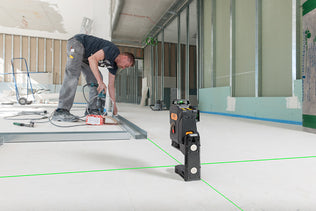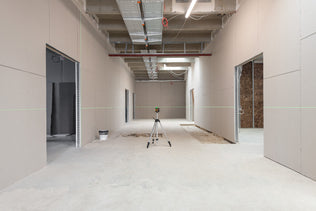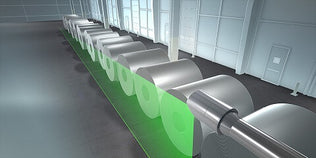One Less Unknown
In 1994 Erin Allin Cornell, an American physicist said, “There are relatively few experiments in atomic physics these days that don’t involve the use of a laser”. Nearly 30 years later his statement still holds true.
We spoke to Jason Christoforidis, a mechanical designer at the Australian Nuclear Science and Technology Organisation (ANSTO) about how one of Laserman’s Z-Laser Precision Alignment Cross lasers is being utilised in experiments with Neutron Beam Instruments.
ANSTO is an Australian government entity employing over 1200 people, who work across areas such as health, the environment and nuclear fuel cycle to find solutions to some of the biggest questions in science in order to create a more sustainable future for all Australians. They have tackled a number of important projects including; nuclear imaging to advance detection and diagnosis of disease, and undertaken research on the key properties of nuclear waste in order to improve the safety of waste management and storage.
Christoforidis works in the Maintenance and Engineering (AME) division at ANSTO and has considerable design experience on Neutron Beam Instruments, more specifically small-angle neutron scattering (SANS) instruments.
Neutron Beam Instruments use neutrons from Australia’s OPAL nuclear research reactor to study the structure, dynamics and properties of a range of materials, helping scientists understand why materials have the properties they do, and helping to develop new, tailored materials. When the neutrons hit a sample, which could be any sort of material from hard materials such as superconductors, battery components & steel, to soft materials such as fats, starches, polymers and proteins, the neutrons are scattered by atoms within the sample which creates a pattern on the neutron detector. Analysis of this scattering pattern provides unique information on how the atoms are arranged within the sample.
A huge accomplishment for Christoforidis was his significant contribution to the mechanical design of the Bilby SANS Instrument which is one of the suite of three SANS instruments.
One of the challenges of neutron scattering, is to align the samples to the beam of neutrons to ensure that the scattering that is observed is only from the sample and not from the sample container. If the detector pattern has scattered neutrons from both the sample and the sample container it is very difficult to analyse.
He said, “In this particular case, we needed to replicate the position of the neutron beam, with a visible laser cross, so we could ensure the neutron beam is aligned with the sample.”
“We had very tight space available with zero access for adjustability. We could only machine a precision 10mm bore where we wanted the laser to be aligned to. There was no space for external alignment screws or other assisting tools.”

(Quokka Sans Instrument Image credit: ANSTO)
For reliable and repeatable fast alignment of samples a precision alignment laser with little deviation from its housing was required. Such an exact laser would allow for better accuracy when aligning the neutron beam to the sample.
In his search to find a laser supplier that would meet his requirements, Christoforidis stated, “Many other suppliers either ignored my requests or gave abrupt responses that clearly indicated they were not interested.”
Through a simple Google search he came across Z-Laser and their Australian distributor Laserman, who were ready to accommodate their needs.
Thankfully, Z-Laser had a 0.2mrad (milliradian) precision alignment laser on shelf that they were willing to supply at a reasonable cost. Finding a laser like this was the perfect solution to the challenge, as the lower laser bore sight angle, means the laser is pointing closer to the centerline of the laser housing, enabling far more accurate neutron beam focusing and sample alignment.
Christoforidis then spoke with the Stephen Ferguson, the owner of Laserman, further about the laser’s optic ability and what could be achieved through the use of the Precision Alignment Cross laser.
Speaking about his experience ordering through Laserman and Z-Laser, Christoforidis stated, “They were the clear exception and provided professional and fast responses that met our needs. I could not recommend them enough”.
“It was one less unknown I had to think about”, he further expressed in regard to how the Precision Alignment Cross laser aided this SANS Instrument experiment.
If you are interested in purchasing a Precision Alignment Cross laser for your research projects, you can find it on Laserman’s website at
https://www.laserman.store/product/z5-x10p-m-635-x30-precision-alignment-laser
Author: Chloe Nolan










